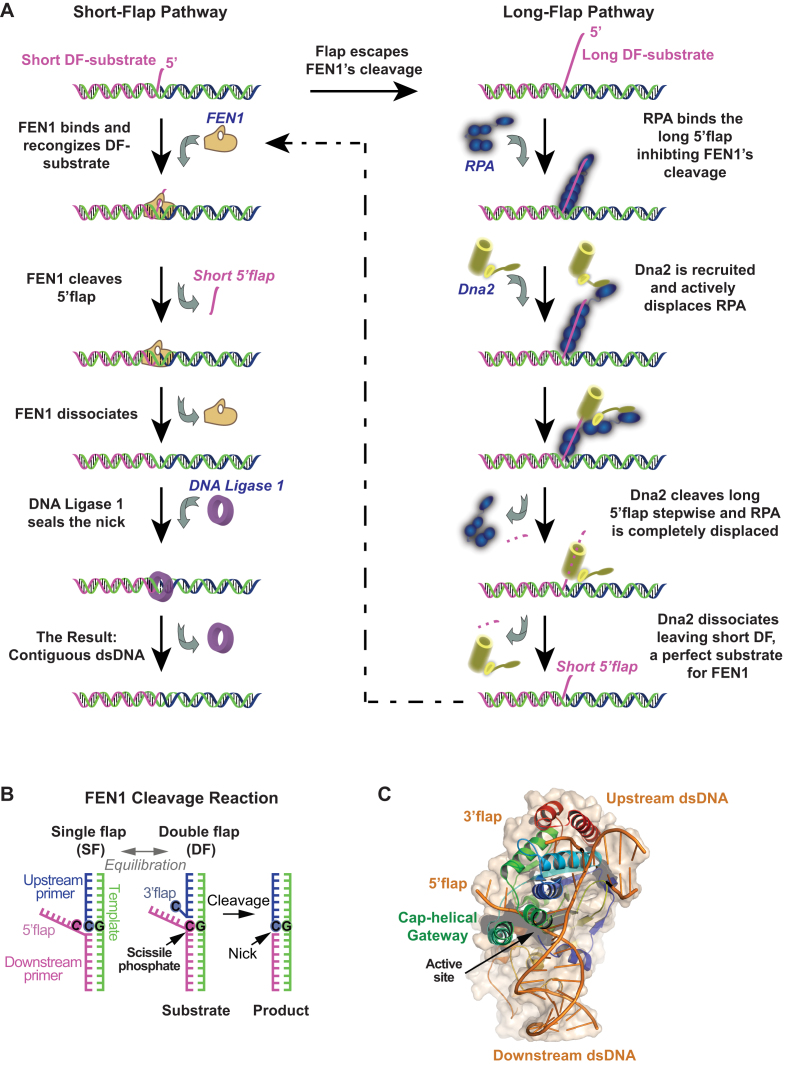Figure 1.
FEN1 actions in OF maturation. (A) Short- and long-flap pathways for processing OF. Left: schematic of the major short-flap pathway. A short 5′ flap (1–6 nt) created by limited strand displacement activity of DNA polymerase δ is recognized and cleaved by FEN1 to generate a nick that is sealed by DNA ligase 1. Right: schematic of the minor long-flap pathway. If a longer flap is formed, it is tightly bound by RPA, which inhibits FEN1 and necessitates Dna2 involvement. Dna2 displaces RPA and cleaves the long flap progressively until it is too short to maintain Dna2 binding and becomes a perfect substrate for FEN1 in the short-flap pathway. (B) Recognition and cleavage of short flaps by FEN1 in vivo involves flap equilibration. Strand complementarity between the downstream and upstream primers enables the nick junction to equilibrate. FEN1 binds this substrate and sculpts a 1 nt 3′ flap (8), resulting in a DF structure that is incised 1 nt inside the junction to generate a sealable nick. (C) Crystal structure of FEN1 in complex with a 5′ flap substrate. FEN1 makes extensive interactions with the upstream and downstream duplex regions flanking the nick junction. The DNA is bent at the junction by ∼100°, and the 5′ flap is threaded through a cap-helical gateway structure that oversees the active site. Binding of the 3′ flap transitions the gateway from a disordered to ordered form, providing a mechanism to control active site assembly (PDB accession code: 5UM9) (37).

